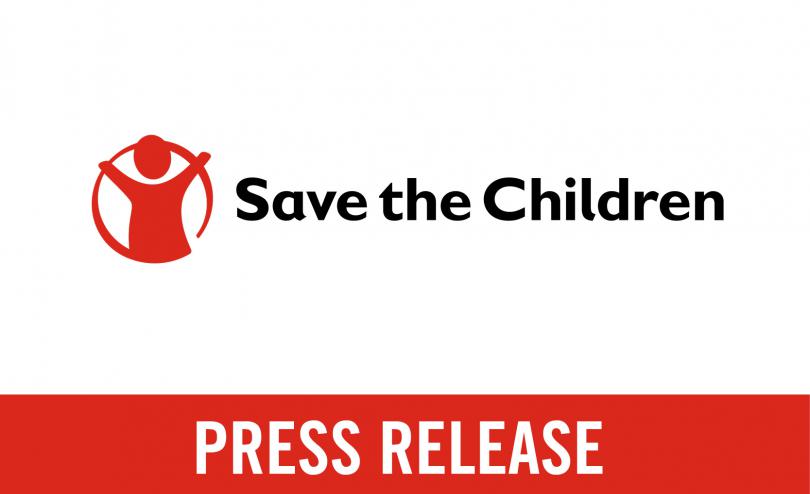SOUTH ASIA FLOODS: More than three million children affected by severe flooding across India, Bangladesh and Nepal

- Landslides, damaged roads and bridges are making access to remote communities difficult with thousands of villages cut off from outside world
- Fears that water-borne diseases could lead to a health emergency
- Frequency and intensity of flooding as a result of climate change is putting the lives of millions of children at risk
More than a week of heavy monsoon rains in South Asia has led to major flooding in three countries affecting 3.2 million children.
With the monsoon season only just beginning, Save the Children is concerned more bad weather could result in a major humanitarian crisis leading to further death, injury, mass displacement and the potential spread of water-borne diseases.
More than 150 people are known to have died but hundreds more remain missing and the death toll is likely to increase.
In India’s northeastern state of Assam, more than 4,000 villages are flooded. Major roads into and out of the state are blocked, making relief efforts particularly challenging. Some 4.3 million people have been directly affected, more than a tenth of the state’s total population, including 1.72 million children. In northern Bihar state a further one million children are affected.
Anindit Roy, Programme & Policy Director at Save the Children India, said:
“We aim to reach 15,000 children in Assam immediately with life-saving aid including temporary shelter, water, hygiene and sanitation services – all of which are essential to protect children from the elements and potential disease. Our teams on the ground say roads are blocked and power is out, making it very difficult to access towns and villages cut off from the outside world. Working with the government and our local partners our priority is to help the most vulnerable and hard-to-reach communities affected by the floods.”
Bangladesh is also reeling from the first heavy rains of the monsoon season, with the northeastern part of the country bordering India the worst affected. Nearly one million people, including more than 400,000 children are among those directly impacted, with 17 out of the country’s 64 districts flooded.
Dr Ishtiaq Mannan, Save the Children’s Deputy Country Director in Bangladesh, said:
“We are used to extreme weather here in Bangladesh but what is most alarming is the frequency of flooding caused by heavy rainfall. We believe the increasing intensity and unpredictability of our weather patterns is caused by climate change. Children are disproportionately affected by such calamities, more vulnerable to disease, injury, displacement and hunger. We are deeply concerned about the safety and well-being of millions of children living in the most remote areas of Bangladesh. Lingering monsoons, rising sea levels and frequent flashfloods could increasingly put these children’s lives at risk.”
More than one million Rohingya refugees living in flimsy bamboo shelters in Cox’s Bazar in southeastern Bangladesh are also in need of assistance following days of heavy rain that has turned roads into mud. More than 6,000 Rohingya refugees have been displaced by the rainfall, because their shelters were either partially or completely destroyed.
David Skinner, Rohingya Response Team Leader in Cox’s Bazar, said:
“Our teams are rushing to repair dozens of damaged structures so that we can continue to provide services for the Rohingya community in Cox’s Bazar. At least 90 of Save the Children’s facilities have been damaged including dozens of our learning centres and child-friendly spaces. It’s vital we get these up and running as soon as possible because these are often the only places Rohingya children can learn and play in a safe and supportive environment.”
In Nepal, an estimated 385,000 people including 155,000 children have been affected by a week-long heavy downpour leading to landslides and widespread flooding. Dozens of people have been killed and the death toll is expected to rise further. Children are particularly vulnerable to death, injury, disease, exploitation and abuse.
Ned Olney, Save the Children’s Nepal Country Director, said:
“Severe flooding and landslides have left tens of thousands of people homeless, many stranded outdoors, some cut off from the outside world. It’s absolutely essential that we reach these communities to avoid this turning into a health emergency. We are concerned about possible outbreaks of water-borne diseases like diarrhea, dysentery, typhoid, Hepatitis A and E, particularly in areas where water sources have become contaminated by floodwaters.”
NOTES TO EDITORS
- In India, Save the Children is working in three districts in Assam reaching 15,000 children, with shelter and hygiene kits, water and sanitation and child protection services. Save the Children works in close coordination with the Indian government.
- In Bangladesh, Save the Children is providing relief efforts in four districts, reaching 20,000 people, including 12,000 children, with unconditional cash support, water and sanitation and flood awareness public messages.
- Save the Children is one of the leading International NGOs in Cox’s Bazar, having reached more than 745,000 Rohingya refugees and members of the host community, including over 400,00 children, since the escalation of the crisis in August 2017. Save the Children has more than 2,000 staff and volunteers supporting our programs in child protection, access to education, health and nutrition, water and sanitation services, as well as distribution of shelter and food items. We work in all the Rohingya refugee camps in Cox’s Bazar. We distribute food rations to over half the Rohingya refugees in Cox’s Bazar, including 253,000 children, on a regular basis, providing families with items like rice, lentils and cooking oil.
- In Nepal, Save the Children is planning to provide relief to 77,000 people including 19,250 children, with temporary shelter, water and sanitation services and cash transfers.
- For more on the accumulation and extent of rain in the Indian sub-continent see here.




